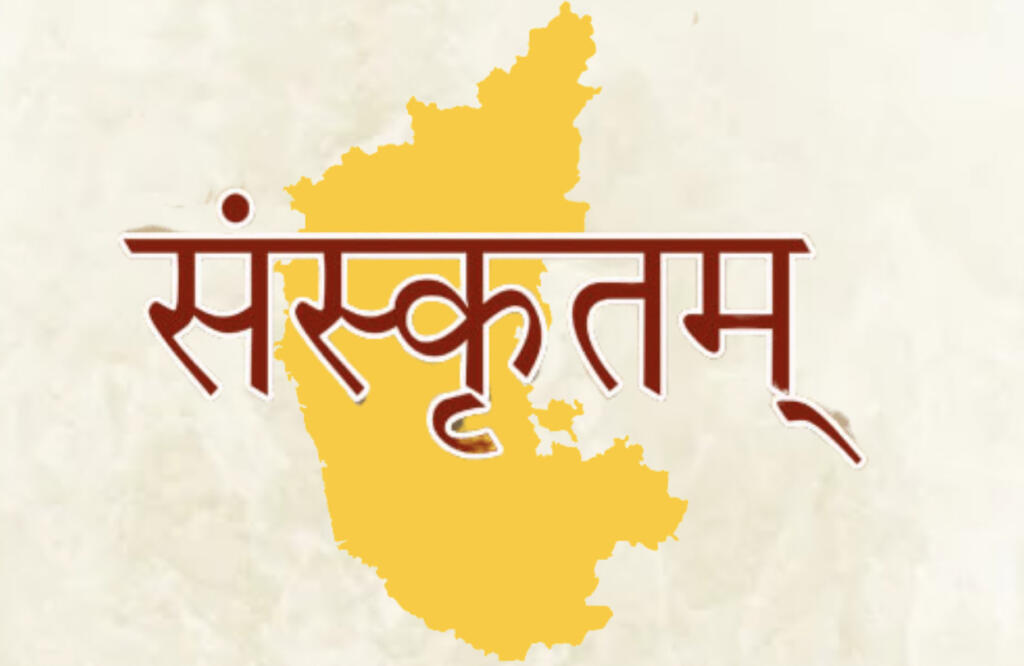Karnataka is witnessing a strange protest from internet activists. The state government’s plan to set up a Sanskrit University in Magadi in Ramanagara district is being criticised actively on social media. Many critics say that Sanskrit is being imposed at Kannada’s expense. But is it true?
#SayNoToSanskrit campaign
A Twitter trend is going on that is urging the government to drop its plans of building a Sanskrit University and is warning of protests in case the government goes ahead with its plans.
T A Narayanagowda, President of Karnataka Rakshana Vedike, said that they won’t allow the Karnataka government to set up the varsity using Kannadiga tax-payers money.
Prathap Kanagal, head of JD(S)’ IT wing said, “What is the need to set up a Sanskrit University using government funds?”
Activist Ganesh Chetan said, “The days of emotional blackmail with Sanskrit (and) Kannada fake mother daughter sentiment and using this to exploit gullible Kannadigas are over.”
One of the users tweeted, “What purpose does a Sankrit university serve, in Karnataka? How will it benefit Kannadigas? Dear Kannadigas, let’s stick to Kannada, alone. Sanskrit is as alien and foreign as any other lang, to us. Let’s not splurge money on this futile exercise.”
What purpose does a Sankrit university serve, in Karnataka? How will it benefit Kannadigas? Dear Kannadigas, let’s stick to Kannada, alone. Sanskrit is as alien and foreign as any other lang, to us. Let’s not splurge money on this futile exercise #ಸಂಸ್ಕೃತವಿವಿಬೇಡ #SayNoToSanskrit
— Ramachandra.M| ರಾಮಚಂದ್ರ.ಎಮ್ (@nanuramu) January 16, 2022
Another user tweeted, “By going at this rate, Kannada will perish in another 20 years. Imposing Hindi and now Sanskrit which is almost considered as dead language is allotted 360 crores for VV. What jobs can Kannada ppl get from Sanskrit? Stop this bootlicking.”
By going at this rate, Kannada will perish in another 20 years. Imposing Hindi and now Sanskrit which is almost considered as dead language is allotted 360 crores for VV. What jobs can Kannada ppl get from Sanskrit? Stop this bootlicking #SayNoToSanskrit #ಸಂಸ್ಕೃತವಿವಿಬೇಡ
— Bobby Vijay (@bobbyvijaybs) January 16, 2022
Karnataka needs a Sanskrit University
The fact remains that Karnataka needs a Sanskrit University. In fact, every state in India needs one such educational institute.
It is easy to look at a minuscule minority that uses Sanskrit today and to dismiss the language as insignificant. However, Sanskrit is actually the most lively language.
Also read: Param Sundari proves that you can use Sanskritised Hindi in songs and still sound cool
According to Dr. Peter M Scharf, a renowned academician of the Sanskrit Library, Sanskrit has resiliently borne the brunt of time, and for years, it remained the primary knowledge-bearing and culture-bearing language of India.
Sanskrit has the largest body of literature, and Panini’s grammar remains impeccable, which allows the language to adapt itself to changing circumstances.
In fact, India as a civilization could still potentially blossom from the sheer amount of Sanskrit literature present. For instance, Hindu religious works are abundant and the ability to preserve and memorize these in Sanskrit should become the routine.
Sanskrit is not alien to any language or part of India, because of the cultural significance it carries.
Kannada is heavily influenced by Sanskrit
Now, this is where protests against a Sanskrit University in Karnataka seem rather unreasonable. As per Dr. Scharf, all modern languages in India draw about 50 percent from Sanskrit. As per him, Malayalam and Kannada top the list when it comes to drawing from Sanskrit.
It is widely accepted that Kannada is heavily influenced by Sanskrit. However, anti-Sanskrit activists keep claiming that Kannada didn’t originate from Sanskrit.
Also, there is a lot of fear-mongering about Sanskrit imposition. The fact remains that Sanskrit University is no attempt at imposition. It is all about getting to the cultural roots and preserving Karnataka’s rich Sanskrit heritage.
A Sanskrit University in Karnataka will, in fact, only enrich Kannada due to the semblance in two languages. And no one who understands this would want to say no to Sanskrit.
